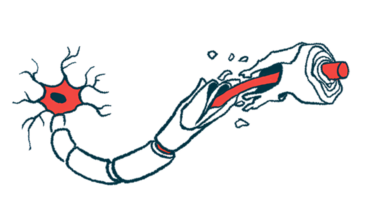Eye tracking device for monitoring MS severity approved in Canada
Use of ETNA-MS will help make it easier to monitor disease progression

Health Canada has approved the commercial use of ETNA-MS, a software-based medical device that uses eye tracking to noninvasively measure disease severity in people with multiple sclerosis (MS).
Short for Eye-Tracking Neurological Assessment for Multiple Sclerosis, ETNA-MS assesses disease severity based on a person’s eye movements. It’s intended for use by doctors at the clinic but also for self-testing at home, according to its developer Innodem Neurosciences.
Innodem says the eye tracking device will make it easier, overall, to monitor disease progression among MS patients.
“As far as we know, this is a world first that we hope the Canadian MS community will embrace for optimal management of people living with MS,” Marc Reeves, chief business officer at Innodem, said in a company press release.
No information was provided on how or when the newly approved device will be made available to patients in Canada, which has one of the highest rates of MS of any country across the globe.
Use of eye tracking device may help improve disease management
Innodem, which originally designed the digital biomarker technology, teamed up with Novartis Canada in 2021 to further develop ETNA-MS, extending the partnership in a multimillion-dollar agreement last year.
Novartis Canada, for its part, welcomed the regulatory decision.
“This approval brings us one step further in closing the gap in care for people living with MS and marks a shift to a more proactive approach to disease management,” Erin Keith, vice president of neuroscience at Novartis Canada, said in a separate press release.
“We are taking innovation in MS beyond therapeutics, paving a path to much needed solutions,” Keith added.
In MS, the immune system launches mistaken inflammatory attacks that damage the myelin sheath, a fatty substance that surrounds and protects nerve cells. This drives progressive nerve cell damage over time.
Such attacks also can affect the nerves that supply the eyes, leading to subtle changes in eye movements that are not readily detected with available imaging techniques.
The ETNA-MS software aims to capture these changes as a way of better monitoring disease progression and resulting cognitive problems earlier in the course of a person’s MS. That would allow patients to make more rapid treatment decisions as their condition progresses, according to the developers.
Paul Giacomini, MD, chief medical officer at Innodem, said the approval “brings us one step closer to giving clinicians a tool that could help inform better clinical decision-making and offer more positive outcomes” for patients.
“We’ve learned a lot about MS and its progressive nature over the years, but we still hadn’t established a reliable and accessible means through which to monitor subtle changes in disease status in near real-time,” Giacomini said.
ETNA-MS could be used by patients at home
ETNA-MS software is designed to run on standard iPad Pro tablets, which patients use to perform a series of simple visual tasks lasting less than 10 minutes in total. Those tasks are designed to assess key neurological functions known to be impacted by MS.
During the test, the software extracts and analyzes hundreds of different parameters related to eye movements and gaze, applying artificial intelligence-based algorithms to interpret what they mean in terms of disease severity and cognition.
From its analysis, ETNA-MS will predict a person’s score on the Expanded Disability Status Scale (EDSS), a standard tool for evaluating MS functional disability and disease progression in the clinic.
The EDSS scale runs from 0, indicating no disability, to 10, for death due to MS, with increasing degrees of functional disability in between. ETNA-MS is designed to predict EDSS scores from 1 — reflecting minimal functional changes in one domain — to 4.5, where disability is significant and somewhat limiting, but a person still has daily independence.
In a validation study, the software was found to accurately assess disease severity and cognitive status among MS patients.
Ultimately, the companies believe the output from ETNA-MS can help doctors detect subtle signs of disease progression that might not be captured using imaging tests or available blood-based biomarkers — assisting clinicians in making more effective treatment decisions.
We believe that remote self-testing could improve the efficiencies of the healthcare system and extend this capability to people living with MS residing in rural areas who cannot easily access a specialist.
It also gives patients an easier way to evaluate their health status without having to visit the clinic.
“We believe that remote self-testing could improve the efficiencies of the healthcare system and extend this capability to people living with MS residing in rural areas who cannot easily access a specialist,” said Étienne de Villers-Sidani, MD, founder and CEO of Innodem.
Diego Mena Martínez, executive director of the Quebec Division of MS Canada, called the approval a sign of “progress.”
“When someone is diagnosed with MS, it changes their life,” Martínez said. “It can be a challenging condition to manage given its unpredictable nature, so I welcome the progress happening in this space as an important step towards a more proactive care approach which has the potential of positively impacting people living with this disease.”
ETNA technology also is being evaluated for use in other neurodegenerative indications, including Friedreich’s ataxia, Parkinson’s, and Alzheimer’s diseases.








